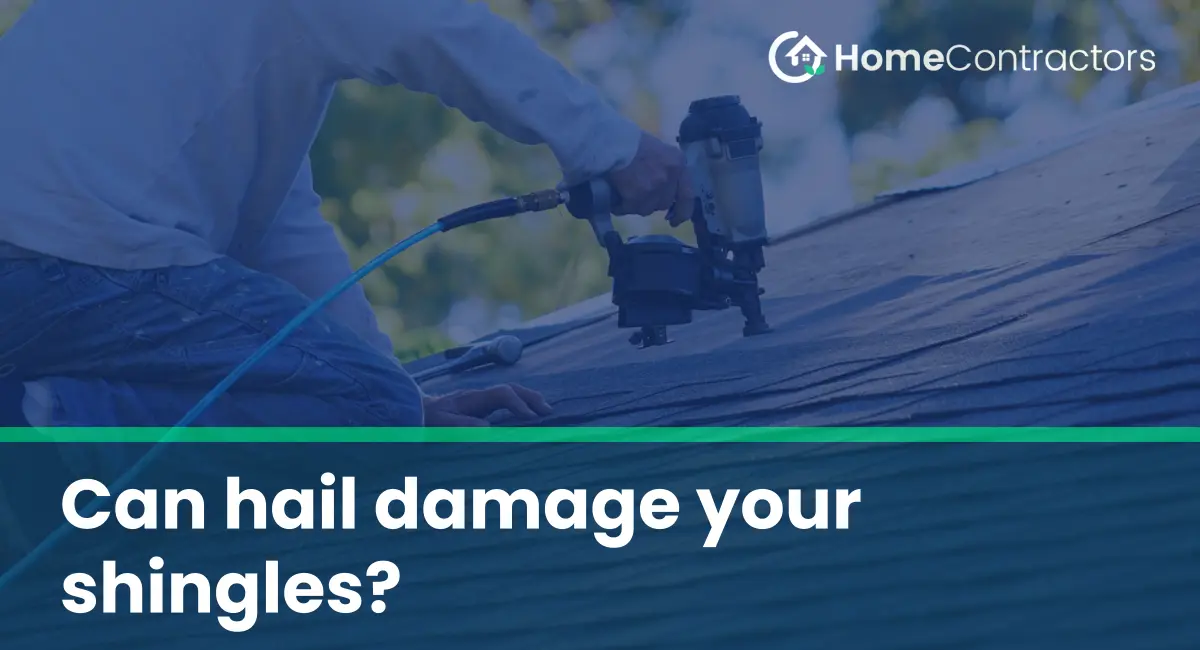Hailstorms can be a terrifying occurrence for homeowners, causing significant damage to various parts of a property. Among the vulnerable areas are the roof and its shingles. This article aims to explore the potential damage hail can inflict upon shingles, the signs to look out for, and the necessary actions to take if your shingles are affected.
Understanding Shingle Composition:
To gauge the potential impact of hail on shingles, it is essential to understand the composition of these roofing materials. Typically, shingles are made of asphalt or fiberglass, with a protective granule layer on their surface. This layered structure provides durability and weather resistance to protect a home’s interior.
Hail Damage Severity:
The severity of hail damage depends on multiple factors, such as the size, density, and force with which the hailstones strike the shingles. Larger hailstones or those with jagged edges are more likely to cause significant harm compared to smaller, smoother ones. Additionally, the speed at which hailstones fall can amplify the damage.
Visible Signs of Hail Damage on Shingles:
- Granule Loss: A noticeable sign of hail damage is the loss of protective granule layers on shingles. The force of impact often dislodges these granules, leaving bare spots on the shingles’ surface.
- Bruising or Cracking: Hailstones can dent or crack shingles upon impact. These bruises are often visible as soft spots or indentations on the surface. In severe cases, shingles may exhibit cracks, which can compromise their effectiveness.
- Missing or Loosened Shingles: Intense hailstorms can cause shingles to dislodge from their proper positions, leaving empty spaces on the roof. This can lead to further water damage and leaks if left unaddressed.
The Potential Consequences:
- Roof Leaks and Water Damage: Hail damage weakens the shingles’ protective barrier, making them susceptible to water infiltration. Over time, this can result in leaks, water damage, and compromised structural integrity.
- Decreased Longevity: Shingles that have suffered hail damage may not last as long as undamaged ones. The structural integrity and weather-resistance capabilities of damaged shingles are compromised, reducing their overall lifespan.
- Energy Efficiency Issues: Damaged shingles may affect the insulation properties of the roof, leading to energy inefficiency. This can result in increased heating and cooling costs for the homeowner.
Actions to Take:
If you suspect hail damage to your shingles, it is crucial to take prompt action to mitigate further issues. Here are the steps to follow:
- Visual Inspection: Carefully assess your roof from ground level, noting any visible signs of damage using binoculars if needed. Look for missing granules, soft spots, indentations, cracks, or displaced shingles.
- Call a Professional: Contact a licensed roofing professional to conduct a thorough inspection. They have the knowledge and experience to assess the extent of the damage accurately.
- Damage Documentation: Capture photographs of the affected areas for insurance purposes. These pictures will serve as evidence and aid in the claims process.
- Insurance Claim: Contact your insurance provider and initiate the claim process. Ensure you provide them with the necessary documentation, including photographs and the inspection report from the professional.
- Repairs or Replacement: Based on the severity of the damage, your roofing professional will recommend repairs or replacements. It is essential to address the damage promptly to prevent further issues and maintain the integrity of your home.
Hail can indeed damage your shingles, jeopardizing the long-term integrity of your roof and potentially leading to leaks and structural damage. Consistent and thorough inspections, prompt professional assessments, and proactive insurance claim processes can help mitigate any potential problems caused by hailstorms. Remember, taking swift action after a hailstorm is vital to ensure your home remains well-protected.
